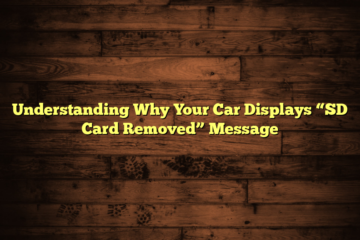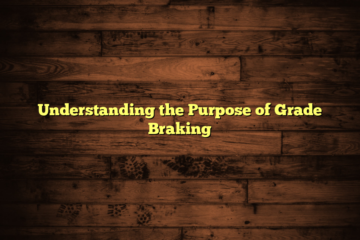What Does Metal Shavings in Rear Differential Mean?
Metal shavings found in the rear differential of a vehicle typically indicate internal wear or damage to the differential components. This can be a serious issue requiring immediate attention, as the rear differential is crucial for allowing the vehicle’s rear wheels to rotate at different speeds, especially when turning. The presence of metal shavings suggests that metal parts within the differential are rubbing against each other abnormally, leading to the creation of these shavings.
Introduction
The rear differential is an essential component of a vehicle’s drivetrain, responsible for transmitting engine power to the wheels while allowing them to rotate at different speeds. It’s a complex assembly of gears and bearings operating under high stress and heat conditions. Over time, or due to lack of maintenance and lubrication, these components can wear out, leading to metal-on-metal contact.
When components such as the gears, bearings, or the differential case itself begin to wear down, they can produce metal shavings that contaminate the differential oil. Identifying the presence of metal shavings early on can prevent more extensive damage and costly repairs.
Key Takeaways
- Metal shavings in the rear differential oil are a clear indicator of internal wear or damage.
- Ignoring this sign can lead to further damage, potentially rendering the vehicle inoperable.
- Regular maintenance and oil changes can help identify this issue before it becomes severe.
- The source of the shavings could range from bearings, gears, to the differential case itself.
- Professional inspection and diagnosis are necessary to determine the exact cause and extent of the damage.
- Repairing or replacing the damaged components early can save significant costs and prevent safety issues.
Understanding the Rear Differential
Components and Function
The rear differential consists of several key components including the ring gear, pinion gear, bearings, and differential case. Each plays a crucial role in the differential’s operation, facilitating the smooth transfer of power to the wheels.
Importance in Vehicle Dynamics
The differential is vital for handling and stability, especially during turns. It compensates for the difference in distance the outer and inner wheels travel, ensuring smooth and stable turns.
Common Wear and Tear Issues
Over time, the stress and strain on the differential components can lead to wear, especially if maintenance is neglected. Understanding these common issues can help in early detection and prevention.
Signs and Symptoms of Differential Wear
Noise and Vibration
Unusual noises or vibrations coming from the rear of the vehicle can be early signs of differential wear or damage.
Differential Fluid Inspection
Regularly checking the differential fluid for metal shavings or unusual debris can help catch issues early.
Impact on Vehicle Performance
Worn differential components can lead to poor handling, reduced fuel efficiency, and in severe cases, complete vehicle breakdown.
Causes of Metal Shavings in Differential Oil
Lack of Lubrication
Inadequate lubrication can cause excessive friction and heat, leading to metal-on-metal contact and the production of shavings.
Overloading the Vehicle
Exceeding the vehicle’s weight capacity can put additional stress on the differential, accelerating wear.
Manufacturing Defects or Faulty Components
In some cases, defects in the manufacturing of differential components can lead to premature wear and the generation of metal shavings.
Diagnostic and Repair Procedures
Professional Inspection
A thorough inspection by a qualified mechanic is essential to determine the exact cause and extent of the damage.
Repair or Replacement Options
Depending on the diagnosis, repair options may range from replacing worn bearings or gears to overhauling the entire differential.
Cost Considerations
The cost of repairs can vary widely based on the extent of the damage and the make and model of the vehicle.
Preventative Maintenance Tips
Regular Fluid Changes
Changing the differential fluid at recommended intervals is crucial for removing contaminants and preventing wear.
Avoiding Overloading
Adhering to the vehicle’s weight limits can reduce stress on the differential and extend its lifespan.
Regular Vehicle Inspections
Routine inspections can help identify potential issues before they lead to significant damage.
Conclusion
The presence of metal shavings in the rear differential is a serious warning sign indicating internal damage or wear. Addressing this issue promptly can prevent further damage, ensuring the longevity and safety of your vehicle. Regular maintenance, including differential fluid changes and vehicle inspections, is key to detecting and preventing such issues.
FAQ
What causes metal shavings in the rear differential?
Metal shavings are typically caused by wear or damage to the internal components of the differential, often due to lack of lubrication, overloading, or manufacturing defects.
How can I prevent metal shavings in my differential?
Regular maintenance, including timely oil changes and adhering to the vehicle’s weight capacity, can significantly reduce the risk of differential wear and metal shavings.
Are metal shavings in the differential always a sign of major damage?
While not always indicative of major damage, metal shavings should always be taken seriously as they suggest abnormal wear that could lead to more significant issues.
Can I drive my vehicle if there are metal shavings in the differential?
It is not advisable to continue driving if metal shavings are found, as this could lead to further damage. A professional inspection is recommended to assess the situation.
What is involved in repairing a rear differential with metal shavings?
Repair procedures can vary, ranging from replacing specific worn-out parts to a complete overhaul of the differential, depending on the extent of the damage.





1 Comment
How Much Limited Slip Additive to Add: A Guide for Optimal Performance. – Automotive Simple · 18 March 2024 at 21:36
[…] friction also means that the lsd additive can help extend the life of the differential by reducing wear and tear. When adding the lsd […]
Comments are closed.